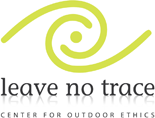Leave No Trace Paddling Principles
 The number of paddlers in Washington State is expected to increase 21% from 2000 to 2010. Paddling is considered one of the fastest growing activities in the United States.
The number of paddlers in Washington State is expected to increase 21% from 2000 to 2010. Paddling is considered one of the fastest growing activities in the United States.
Adopting the Leave No Trace Principles can help reduce the impact of paddling and camping on Washington State's fragile shorelines.
Please take a moment to review the principles and be sure to check out WWTA's Leave No Trace training opportunities.
#1 Plan Ahead and Prepare
#2 Travel And Camp on Durable Surfaces
#3 Dispose of Waste Properly
#4 Leave What You Find
#5 Minimize Campfire Impacts
#6 Respect Wildlife
#7 Be Considerate of Other Visitors
 Educate Yourself - Know your destination and route's regulations, hazards, topography, and facilities.
Educate Yourself - Know your destination and route's regulations, hazards, topography, and facilities.
Plan for Your Group - Match skills, behavior, and group size with the type of destination. Keep group size small, from 4 to 6 people.
Schedule Your Trip in Advance - Obtain permits, make reservations, check tide tables, obtain and study nautical charts and topographic maps, and leave a float plan.
Plan Your Meals - Avoid leftovers and repackage food in reusable containers to minimize waste.
Use Proper Gear - Be prepared for weather, hazards, and emergencies. Bring appropriate attire and gear, emergency equipment, food, and water.
Travel and Camp on Durable Surfaces
 Recognize Durable Surfaces - Concentrate use in durable areas, including established campsites and trails, rocks, sand, gravel, and dry grasses.
Recognize Durable Surfaces - Concentrate use in durable areas, including established campsites and trails, rocks, sand, gravel, and dry grasses.
Protect the Area - Camp at least 200 feet from fresh water sources and establish a low impact strategy.
Disperse Use in Pristine Areas - If you must use these areas, treat them with extreme care.
 Pack it in, Pack it out - Pack out all trash and garbage. Inspect your campsite before moving on. Remember to bring extra bags.
Pack it in, Pack it out - Pack out all trash and garbage. Inspect your campsite before moving on. Remember to bring extra bags.
 Preserve the Past - Do not excavate, disturb, or remove cultural or historic structures and artifacts. For detailed information about the Archaeological Resources Protection Act of 1979, visit the National Parks Service's Archeology Program.
Preserve the Past - Do not excavate, disturb, or remove cultural or historic structures and artifacts. For detailed information about the Archaeological Resources Protection Act of 1979, visit the National Parks Service's Archeology Program.
Avoid Spreading Invasive Species - Spreading non-native plants and animals can cause irreversible damage to the ecosystem by eliminating native species. Help prevent such changes by washing your boats and gear.
 Use a stove - Avoid risking environmental impact by using a stove.
Use a stove - Avoid risking environmental impact by using a stove.
Know the Law - Visit the Pacific Northwest Fire Prevention website.
Build only minimum impact fires - If you must have a fire, keep fires below the high tide line and use only dead and downed wood. Avoid using driftwood.
Manage your campfire - Decide if conditions are safe and never leave a fire unattended. Don't burn waste. Disguise area when done. Avoid sensitive times and habitats - Learn about local marine wildlife through the U.S. Fish and Wildlife Service or call 1-800-WILD.
Avoid sensitive times and habitats - Learn about local marine wildlife through the U.S. Fish and Wildlife Service or call 1-800-WILD. Observe From a Distance - Try not to startle wildlife. Stay at least 200 yards from whales, seals, and birds. Learn more about the whales at The Whale Museum.
Be Considerate of Other Visitors
 Respect Other Visitors - Keep the noise level down. Travel in small groups, making use of bright colors on the water and muted colors on land.
Respect Other Visitors - Keep the noise level down. Travel in small groups, making use of bright colors on the water and muted colors on land.
Yield to Others - At large campsites, concentrate your group to one area to allow room for parties arriving later. In areas used by motorized boaters, do what you can to be noticed and make your intentions obvious.
Let Nature's Sights and Sounds Prevail - Avoid the use of bright lights, radios, electronics, and other intrusive devices in camp and on shores.
Click on the link for a PDF copy of the WWTA Leave No Trace Paddling brochure:
Leave No Trace Paddling Tri-Fold Brochure


